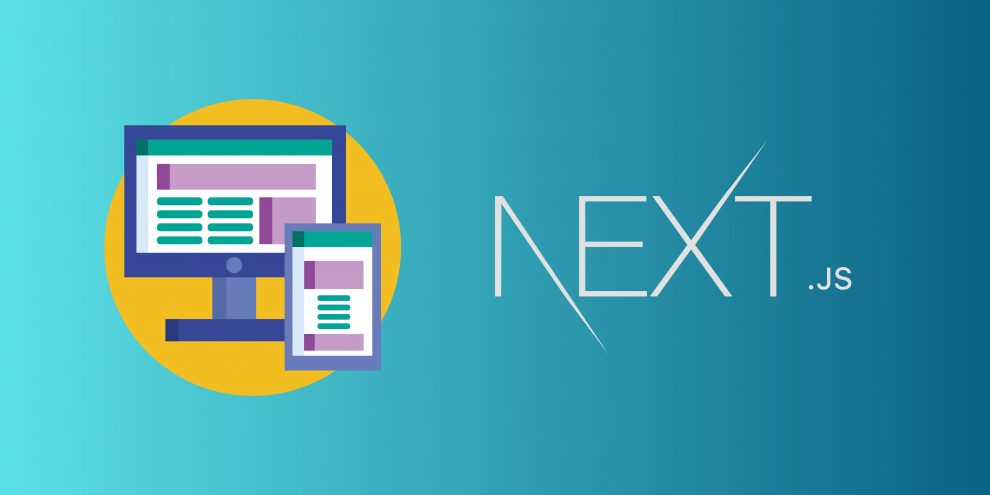In the ever-evolving landscape of web development, staying at the forefront of the latest tools and frameworks is essential. One framework that has undoubtedly made its mark in recent years is Next.js. Known for its impeccable performance, user-friendly approach, and continuous enhancement, Next.js has captured the hearts of developers worldwide. In this comprehensive blog post, we will take a deep dive into Next.js, explore its remarkable features, trace its remarkable growth, and unveil some of the exciting new features that make it the go-to choice for modern web development.
Understanding Next.js
To fully appreciate Next.js and its significance in the world of web development, let’s start by gaining a comprehensive understanding of what it is and why it has garnered such immense popularity.
Next.js: A React Framework for the Real World
At its core, Next.js is a JavaScript framework that has been meticulously crafted on top of React. Developed by Vercel, Next.js is a framework that seeks to streamline the development process of web applications by focusing on robustness and efficiency. What sets Next.js apart is its powerful capability for server-side rendering (SSR), routing, and seamless deployment, making it an excellent choice for projects of various scales, from small web applications to large-scale enterprise solutions.
One of the standout advantages of Next.js is its Server-Side Rendering (SSR) prowess. SSR entails rendering web pages on the server rather than the client, leading to significantly faster page loads, enhanced search engine optimization (SEO), and an overall smoother user experience. Moreover, Next.js comes equipped with an integrated development server, automatic code splitting, and seamless integration with popular front-end technologies such as React and TypeScript.
Features of Next.js

Next.js boasts a robust set of features that make it the preferred framework for developers. Let’s delve deeper into some of these features to gain a better understanding of their significance:
Server-Side Rendering (SSR):
As previously mentioned, Next.js excels in Server-Side Rendering. This means that it can render web pages on the server, providing faster load times and significantly improved SEO performance. The implications of this feature are profound, as it empowers developers to create web applications that not only load quickly but also rank higher on search engine results pages (SERPs).
Static Site Generation (SSG):
In addition to SSR, Next.js supports Static Site Generation (SSG). This approach involves pre-rendering pages at build time, resulting in incredibly fast loading times for static content. With SSG, developers can deliver a snappy and responsive user experience, particularly crucial in today’s fast-paced online environment.
Automatic Code Splitting:
One of Next.js’s standout features is its ability to automatically split code into smaller, more manageable chunks. This translates into optimized performance, as only the necessary code for the current page is loaded. This automatic code splitting mechanism improves load times and overall user experience by minimizing unnecessary resource consumption.
Client-Side Routing:
Crafting dynamic single-page applications (SPAs) with client-side routing is a breeze with Next.js. Developers can create fluid user experiences with minimal effort, thanks to Next.js’s streamlined approach to client-side routing. This feature significantly simplifies the development process for SPAs, resulting in more efficient and responsive web applications.
API Routes:
Next.js offers a straightforward way to build API endpoints within your application. This feature simplifies data fetching and interaction with external services, enhancing the flexibility and functionality of your web application. Whether you need to retrieve data from a database or integrate with third-party APIs, Next.js has you covered.
TypeScript Support:
TypeScript, a superset of JavaScript that offers static typing, is gaining popularity rapidly in the web development community. Next.js seamlessly integrates with TypeScript, enabling developers to write type-safe code and improve overall code quality. This integration ensures that your codebase remains robust and maintainable as your project grows.
Related: How to Become a next.js Developer in the USA
The Growth of Next.js
Next.js has not only gained popularity but has also experienced remarkable growth since its inception. The factors contributing to its rapid adoption are diverse and compelling.
Pervasive Adoption by Industry Leaders
A notable aspect of Next.js’s growth is its adoption by prominent companies such as Airbnb, Netflix, Uber, and more. These industry giants have chosen Next.js for their web projects, citing its reliability, performance benefits, and ease of use. This not only showcases Next.js’s credibility but also reinforces its position as a top-tier framework for web development in both enterprise and startup environments.
A Flourishing Developer Community
The Next.js community has blossomed into a thriving ecosystem of developers who actively contribute their expertise. This community-driven approach results in an ever-evolving framework that remains aligned with the latest trends and best practices in web development. With a wealth of resources, tutorials, and open-source projects, the Next.js community ensures that developers have access to the knowledge and tools needed for success.

New and Exciting Features
Now, let’s explore some of the latest and most exciting features that Next.js has introduced, cementing its status as a cutting-edge framework for modern web development:
Image Optimization:
Next.js has now integrated built-in support for image optimization, a feature that significantly enhances the performance and user experience of web applications. It automates image resizing, optimization, and delivery in modern formats like WebP. This ensures not only rapid load times but also optimal image quality, resulting in a visually appealing and responsive website.
Middleware Support:
The introduction of middleware support in Next.js marks a significant step forward in enhancing the framework’s flexibility and extensibility. With middleware, developers can easily inject custom logic into their server routes. This level of control empowers developers to fine-tune their applications to meet specific requirements, opening up new possibilities for customization.
Incremental Static Regeneration (ISR):
Incremental Static Regeneration (ISR) is a groundbreaking feature that sets Next.js apart from many other frameworks. It enables developers to revalidate and update static content at runtime, combining the benefits of both statically generated pages and dynamic content. This results in websites that are not only incredibly fast but also dynamic and up-to-date, offering a superior user experience.
Faster Development with `npx create-next-app`:
Next.js has streamlined project setup with the introduction of the `create-next-app` command. This command simplifies the process of creating a Next.js application, reducing setup time and allowing developers to focus on building features and functionality. This convenience makes it easier than ever to get started with Next.js.
Improved Analytics Integration:
The importance of analytics in understanding user behavior and optimizing web applications cannot be overstated. Next.js has recognized this need and has improved its integration with popular analytics tools such as Google Analytics and Segment. This ensures that developers have access to valuable insights into their application’s performance and user engagement, facilitating data-driven decision-making.
Best Practices with Next.js
While Next.js offers a plethora of features and advantages, it’s essential to follow best practices to maximize its potential and ensure your web applications are performant, maintainable, and scalable. Here are some key best practices when working with Next.js:
1. Code Splitting and Lazy Loading
Take full advantage of Next.js’s automatic code splitting by breaking your application into smaller modules. This not only improves load times but also ensures that users only download the code they need for a specific page. Additionally, use dynamic imports to lazy load components and assets, reducing the initial bundle size and improving the user experience.
2. Optimize Images and Assets
While Next.js provides image optimization, it’s crucial to use it effectively. Always provide images in the correct format and size, considering different screen resolutions and devices. Use responsive image techniques to serve the appropriate image based on the user’s device capabilities. Moreover, leverage Next.js’s `Image` component to simplify image handling and ensure optimal performance.
3. Caching and CDN Integration
Implement effective caching strategies to reduce server load and improve page load times. Utilize Content Delivery Networks (CDNs) to distribute static assets and cache content at edge locations, ensuring faster delivery to users globally. With Next.js, integrating with popular CDNs is straightforward, enhancing your application’s scalability and reliability.
4. SEO and Metadata
Leverage Next.js’s SEO-friendly features by customizing metadata for each page using the `Head` component. Ensure that your pages have descriptive titles, meta descriptions, and appropriate Open Graph and Twitter Card tags. Effective SEO practices will boost your site’s discoverability and visibility on search engine results pages (SERPs).
5. Error Handling and Monitoring
Implement robust error handling and monitoring in your Next.js applications. Use custom error pages to provide meaningful feedback to users when something goes wrong. Integrate error tracking tools and services to proactively identify and address issues, improving the overall user experience and application stability.
6. Security Considerations
Security should be a top priority in web development. Next.js offers built-in protection against common web vulnerabilities, but it’s essential to follow security best practices, such as validating and sanitizing user input, securing API routes, and implementing proper authentication and authorization mechanisms.
7. Testing and Performance Profiling
Regularly test your Next.js applications to identify performance bottlenecks and potential issues. Tools like Lighthouse, WebPageTest, and Chrome DevTools can help you profile and optimize your application’s performance. Use testing frameworks like Jest for unit and integration testing to maintain code quality and stability.
8. Continuous Integration and Deployment (CI/CD)
Implement a robust CI/CD pipeline to automate testing, code quality checks, and deployment processes. Services like Vercel, Netlify, and GitHub Actions integrate seamlessly with Next.js, making it easy to set up a reliable and efficient CI/CD workflow. This ensures that your application remains up-to-date and bug-free with minimal manual intervention.
By adhering to these best practices, you can fully leverage the power of Next.js and create web applications that are not only feature-rich but also high-performing, maintainable, and secure. Embracing these guidelines will set you on a path to success in the ever-evolving world of web development.
Click here to Read: A Deep Dive into the Skills of a Successful next.js App Developer in the USA
Conclusion

In conclusion, Next.js continues to be a dominant force in web development, providing developers with a powerful, versatile, and forward-looking framework. Its exceptional growth, underlined by the adoption of high-profile companies, coupled with the introduction of groundbreaking features like image optimization, middleware support, and incremental static regeneration, reinforces its position as a top-tier tool for modern web development. If you haven’t explored Next.js yet, now is the perfect time to embark on this journey and harness its capabilities for your web projects. Happy coding!


























